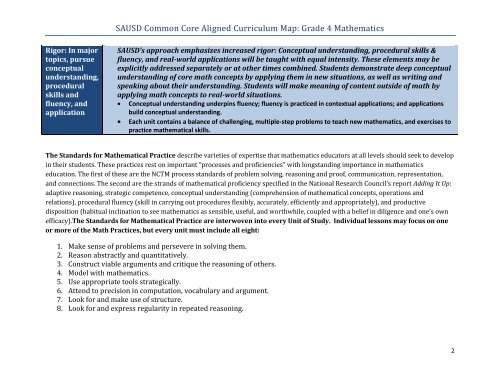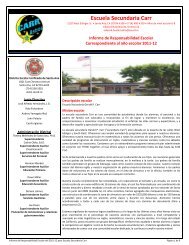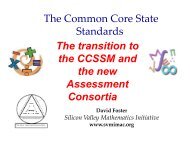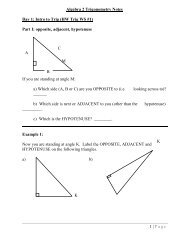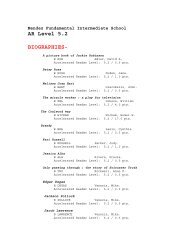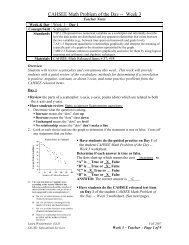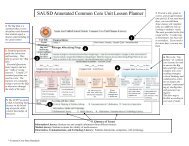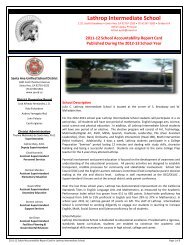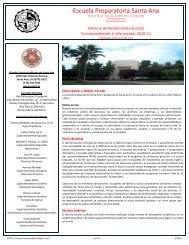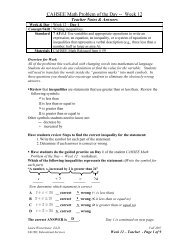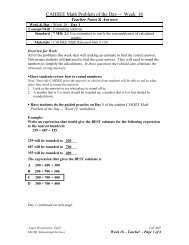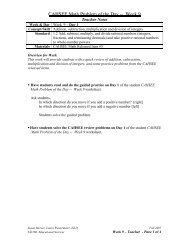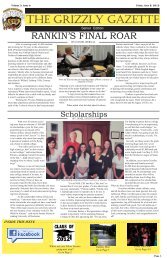2013-2014 Curriculum Map Grade 4 Math
2013-2014 Curriculum Map Grade 4 Math
2013-2014 Curriculum Map Grade 4 Math
You also want an ePaper? Increase the reach of your titles
YUMPU automatically turns print PDFs into web optimized ePapers that Google loves.
SAUSD Common Core Aligned <strong>Curriculum</strong> <strong>Map</strong>: <strong>Grade</strong> 4 <strong>Math</strong>ematicsRigor: In majortopics, pursueconceptualunderstanding,proceduralskills andfluency, andapplicationSAUSD’s approach emphasizes increased rigor: Conceptual understanding, procedural skills &fluency, and real-world applications will be taught with equal intensity. These elements may beexplicitly addressed separately or at other times combined. Students demonstrate deep conceptualunderstanding of core math concepts by applying them in new situations, as well as writing andspeaking about their understanding. Students will make meaning of content outside of math byapplying math concepts to real-world situations. Conceptual understanding underpins fluency; fluency is practiced in contextual applications; and applicationsbuild conceptual understanding. Each unit contains a balance of challenging, multiple-step problems to teach new mathematics, and exercises topractice mathematical skills.The Standards for <strong>Math</strong>ematical Practice describe varieties of expertise that mathematics educators at all levels should seek to developin their students. These practices rest on important “processes and proficiencies” with longstanding importance in mathematicseducation. The first of these are the NCTM process standards of problem solving, reasoning and proof, communication, representation,and connections. The second are the strands of mathematical proficiency specified in the National Research Council’s report Adding It Up:adaptive reasoning, strategic competence, conceptual understanding (comprehension of mathematical concepts, operations andrelations), procedural fluency (skill in carrying out procedures flexibly, accurately, efficiently and appropriately), and productivedisposition (habitual inclination to see mathematics as sensible, useful, and worthwhile, coupled with a belief in diligence and one’s ownefficacy).The Standards for <strong>Math</strong>ematical Practice are interwoven into every Unit of Study. Individual lessons may focus on oneor more of the <strong>Math</strong> Practices, but every unit must include all eight:1. Make sense of problems and persevere in solving them.2. Reason abstractly and quantitatively.3. Construct viable arguments and critique the reasoning of others.4. Model with mathematics.5. Use appropriate tools strategically.6. Attend to precision in computation, vocabulary and argument.7. Look for and make use of structure.8. Look for and express regularity in repeated reasoning.2


